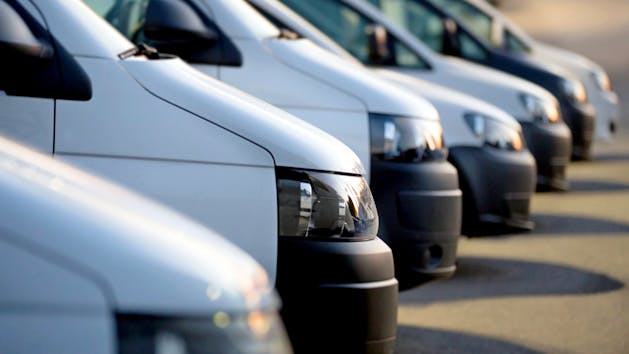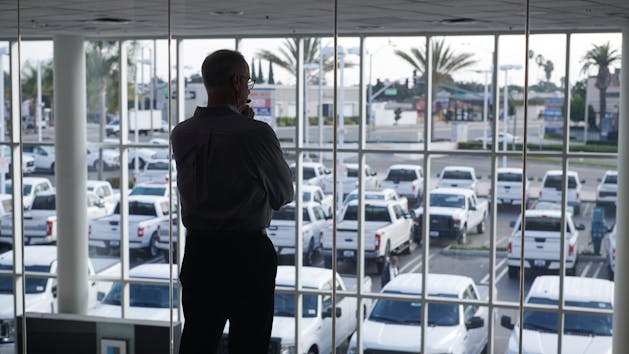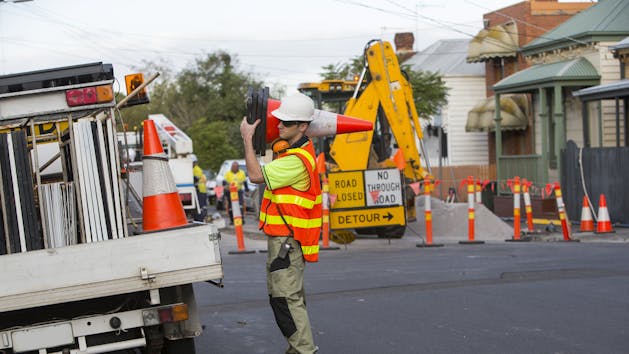Find the right solution for your business with our free Fleet Management Buyer’s Guide.
Drone Fleet Management Increases Efficiency
For companies that operate fleets of trucks, small gains in efficiency translate to huge savings when scaled across an entire operation. UPS estimates that reducing distance driven by just one mile per truck per day could save companies with enormous fleets (eg, UPS, FedEx, the U.S. Postal Service) 50 million dollars over the course of a year. If you're a logistics manager looking to prepare your firm for the future of the industry, you are probably already researching drone fleet management technology. You also may be daunted by the regulatory challenges currently facing any last-mile drone delivery operation—the most commonly discussed use case in the trucking industry.
While this application shows promise, the U.S. just isn’t there yet, especially in urban environments where the laws regarding flying over non-participants and maintaining line-of-sight are challenging to work around.
Here’s the good news: There are already ways to incorporate drones into a fleet. As technology and regulations stand today, drones cannot completely disrupt your current way of doing business – rather, you can view drones as another tool to augment and improve your existing operations. By integrating drones into an existing fleet of equipment and vehicles, you can increase efficiency and overall safety.
How do drones fit in?
It might seem counterintuitive, but many companies with fleets of trucks are already built to incorporate drones into their existing workflows and infrastructure. You already have a depot or office that can be used to store the equipment, mechanics that can perform basic maintenance, and the expertise to manage and deploy operators to suit your business's needs. You know how to operate in a highly regulated industry and foster a culture of accountability and respect for best practices.
You know your way around a checklist and how to keep detailed records. All of these are also requisites for running a commercial drone operation, so the foundation is already laid for an easy transition.
How can drones increase efficiency?
For starters, let's look at how drones can expand your data operations and help you gather insights that can help improve your operations and reduce waste. Odds are you're already using an array of aftermarket hardware and high-powered software to gather and process information about your drivers and fleet, and drones are a means of adding inexpensive, reliable, high-quality aerial data to what you're already collecting. Here are a few use cases for drone aerial data and imaging, many of which have already seen success in the construction and engineering industries.
- Monitoring the workplace: Just as you have equipment that tracks your fleet on the road, you can also use drones to follow that protocol on company property. Are proper safety measures being observed during loading and unloading? Are employees accurately reporting timecard hours? Is maintenance being done in a timely and consistent fashion? Is your facility generally safe and secure? A drone is able to cover more ground in less time than a human observer and record footage in high definition that can be checked in the event of an incident. This white paper describes how a major ports company has been using a pair of drones to monitor ships with high-value cargo.
- Warehouse inventories: According to news reports, Wal-Mart is already testing drones for asset tracking and cycle counting in distribution centers. From a recent Reuters report: “The remotely controlled drone captured 30 frames per second of products on aisles and alerted the user when product ran out or was incorrectly stocked. [Walmart's Vice President of Last Mile and Emerging Sciences Shekar] Natarajan said drones can reduce the labor intensive process of checking stocks around the warehouse to one day. It currently takes a month to finish manually.”
This application may save Wal-Mart millions in labor and greatly increase the efficiency of their warehouses while also reducing waste. - Inspecting equipment and infrastructure: Inspection is a use case that's seen rapid and widespread adoption in many fields, including construction, engineering, and insurance. Besides visual information, which can be used to make straightforward assessments (e.g., evaluating damage to the roof of a truck, checking hard-to-reach parts of the warehouse such as the roof or walls without putting a worker in harm's way), a drone can also be outfitted with other types of sensors. With a thermal imaging camera, you can detect inefficiencies in your HVAC systems and conserve the energy you use to maintain your inventory either in storage or en route.
- Volumetrics and aggregates: Trucks are the most common means of transporting aggregates over shorter distances, and it's vital that the logistics chain is as accurately informed as possible about the quantity of material in a given stockpile. Drones can be used to create a model of a large pile of aggregates, and then it's easy to calculate with survey-grade accuracy the amount of material it contains. This way, you can be sure that the correct number of trucks are dispatched according to their weight load requirements, helping to reduce waste and inefficiency while protecting workers from having to climb on unstable and dangerous surfaces.
- Documenting accidents: Given current technology, road accidents are still an inevitable statistical outcome of having so many vehicles on the road at any given time. When an incident occurs, documenting the aftermath is important both to the company and to insurers. A representative from your company, perhaps even the driver if unharmed, could use a drone to collect aerial data to document the exact circumstances of the crash or accident. At the very least, the images can help you understand the cause of the incident and hopefully prevent similar outcomes in the future.
Building on a solid foundation
These use cases are just a few examples of how drones can be used today to make your operations more efficient. As regulations evolve and it becomes easier to use drones for last-mile deliveries, or to serve rural areas without sending a driver and truck on a low-density delivery run, the sky will truly be the limit for this technology to deliver freight. When that day comes, those companies that have already embraced drones will enjoy a considerable advantage over their competitors and find that scaling up is an easier when you already have laid the foundation for a well-run commercial drone operation.
Skyward, a Verizon company, helps companies launch and run safe, efficient drone operations. Like operating a fleet of vehicles, drones require logistical, safety, and regulatory oversight. Between dynamic airspace, evolving regulations, operator certifications, maintenance, and job specifications, there’s a lot to keep track of—more, if you operate in multiple jurisdictions. Skyward’s operations management platform gives businesses one place to manage it all.
Find out how our platform gives you the visibility you need to get more done.



